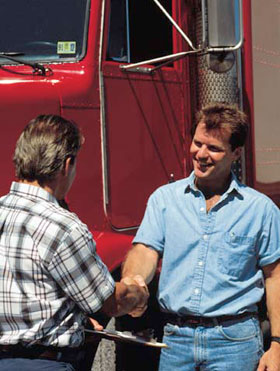Driving a large, heavy piece of equipment is not easy. It takes a lot of training to maneuver an 18-wheeler safely through windy roads and in traffic jams on the highways. Driving a tractor-trailer requires training. Many trucking companies will not hire any drivers with less than two years of experience. However, with the recent truck driver shortage, some companies are hiring less experienced drivers, but providing them with thorough on-the-job training and shadowing of veteran drivers.
 Training new drivers can be expensive and time consuming. It is extremely important to document the training and results for legal reasons. If an accident were to happen, plaintiff attorneys will take advantage of any gaps in training records to argue that the company was negligent and its drivers were unfit for duty. Whether you are a large fleet or an owner-operator looking to hire your first driver, it is critical that you utilize the best training methods and document it. Thankfully technology can help you with the training of new drivers.
Training new drivers can be expensive and time consuming. It is extremely important to document the training and results for legal reasons. If an accident were to happen, plaintiff attorneys will take advantage of any gaps in training records to argue that the company was negligent and its drivers were unfit for duty. Whether you are a large fleet or an owner-operator looking to hire your first driver, it is critical that you utilize the best training methods and document it. Thankfully technology can help you with the training of new drivers.
Technology is constantly changing at a rapid pace so it’s important to stay up-to-date on the latest in the industry. We have identified four technologies being used by some of the country’s largest fleets to train their new drivers. While all these technologies might not work for your needs, you might identify one that could save you both money and time while making training documentation more efficient.
- Integrated Safety Features
Technology has come a long way, especially in the trucking industry. Truck driving is still considered to be one of the most dangerous jobs in America today, but luckily truck manufacturers are designing safer trucks with advanced safety tools. Freightliner Cascadia and Cascadia Evolution trucks are now manufactured with Detroit Assurance. Detroit Assurance is a new safety system that is fully integrated in the Detroit engine and transmission.
The Detroit Assurance system has multiple safety features like the radar system that can sense when a vehicle is too close and an optional camera system that can track the truck’s position within a driving lane. Once the Radar System senses that a vehicle is too close, it uses the Active Brake Assist to apply the truck’s brakes to minimize the potential damage from a collision. The optional camera system will alert the driver if they cross a lane without using a turning signal. Not only do these types of tools help protect both drivers and companies, but it helps new drivers learn the rules of the road faster.
- Learning Management Systems
Gone are the days when you have to sit in a boring classroom all day. Most learning sessions can be conducted online using new technology. Maverick Transportation uses a customized software training program called Truck Management Skills (TMS). The training course contains a variety of computerized and instructor-led courses on safety, map reading, electronic logging and many other topics. Additionally, Maverick designed the course to administer tests to check in on the drivers to see how they are performing and what areas they might need a little help in during their course. Maverick uses EBE Technologies’ Learning Management System (LMS) software. The LMS allows Maverick users to embed their own training videos, slideshow presentations and other coursework and quizzes to create a customized program for their drivers.
In addition to learning how to drive a truck, it’s important for new owner-operators to know the essentials of running a small business. ATBS has created an educational program called CABS that helps owner-operators learn about tax deductions, effectively managing fuel, fixed and variable expenses, incorporation, maintenance, time management, money management, retirement strategies, and more.
- Custom Content
Every company including owner-operators have their own company rules and methods of training new drivers. There is no “one size fits all” training method. Many companies provide their new and veteran drivers with customized training content to meet their needs. While some companies have the in-house knowledge and skills to create their own customized training programs, some companies need a little help. J.J. Keller has an Implementation Services department that is designed to give fleets a cost-effective way to customize training materials and help them develop and implement their own online LMS program.
- Record Everything
Documentation is key. Record everything. If you’re not sure if it’s important, record it anyway. It could save you in the end. Virtual Alliance has recently developed a tool called Assessment Deck that converts paper forms to electronic forms to capture and record information and create records like vehicle inspections and internal audits. Forms can then be sent electronically to the people that need them with a push of a button.
Technology has slowly been automating much of our lives over the recent decades. Just look at the banking industry. You can now deposit a check with just your smartphone! Trucking companies are starting to adopt new technology for training new drivers and managing their businesses because it saves them money, cuts down on the number of hours spent shuffling paper, and helps new drivers learn the rules of the road better.